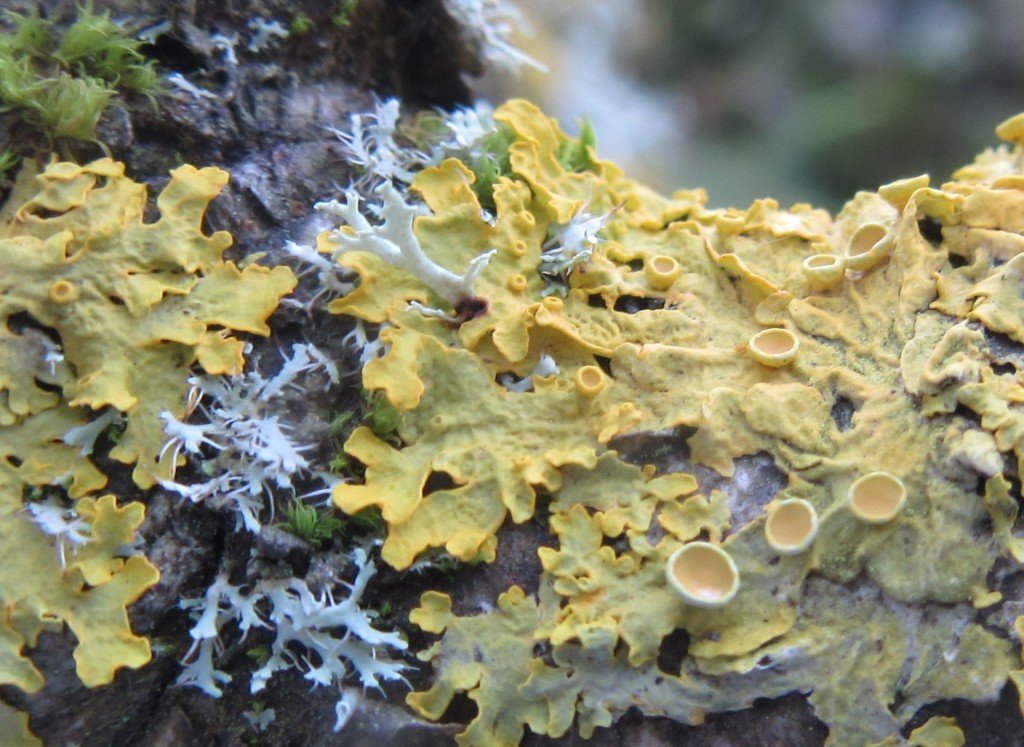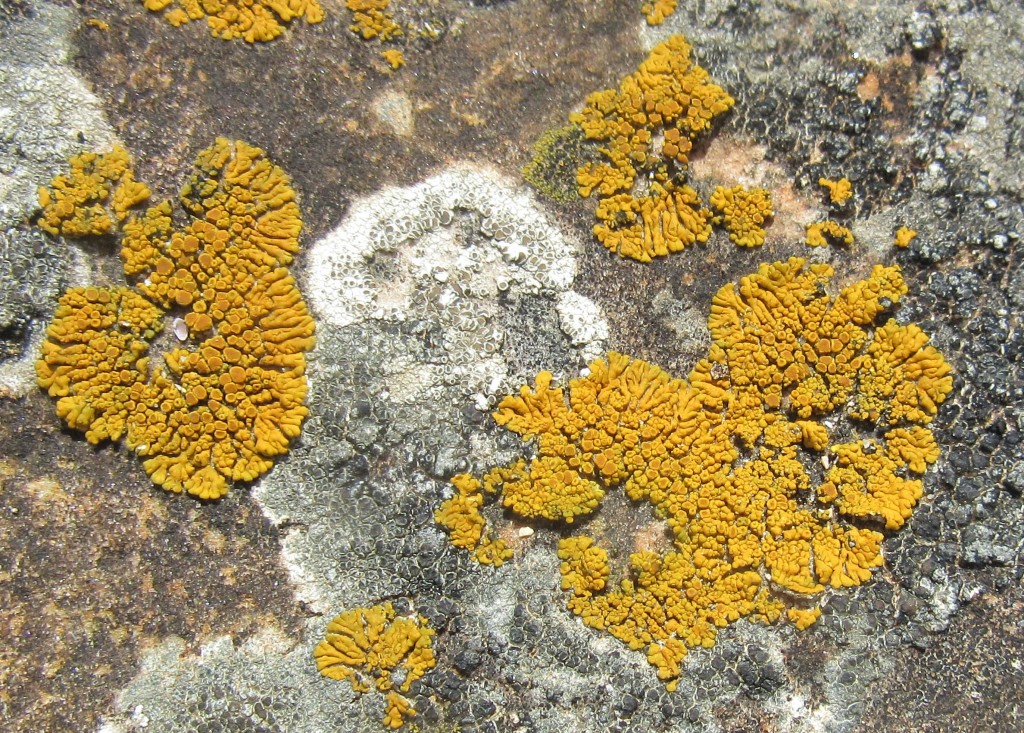Wall lichen, yellow wall lichen, common yellow wall-lichen, common yellow wall-moss, yellow crotal, maritime starburst lichen – there are not many lichen species that can boast to have six common names. Needless to say, the English names for the species have yet to be standardised, but they do capture the ubiquitous, eye-catching and saxicolous character of the species in question.

As one of the common names suggests, Xanthoria parietina is often found on rocks and trees in coastal regions, often with no shade to protect it from the sun whatsoever. The species’ bright yellow colour, however, is an in-built sunscreen produced by the lichen substance parietin. Lichens are unique in producing chemicals that are seldom found elsewhere and many of these substances are used to protect against grazing, for example, by slugs and snails. Parietin, however, protects Xanthoria parietina against damage from UV radiation. This foliose lichen is often found just beyond the direct influence of the waves, but lower down the shore you’ll find the equally eye-catching Xanthoria aureola and Xanthoria calcicola as well as the placodioid lichen species Caloplaca thallincola, Caloplaca verruculifera and Caloplaca flavescens. Each of these species is yellow or orange and each of them produces the lichen substance parietin to protect it from UV radiation.

Xanthoria parietina, along with Xanthoria aureola and Xanthoria calcicola, thrives along the coast. Saline air gives it just that little bit extra to accelerate its growth. Some lichens are sensitive to this form of nutrient-enrichment and whither. Other species see the increase in nitrogen, which is an essential nutrient, up to a certain point as a welcome addition. This differentiated impact of nutrient-addition of saline air on lichen species, in turn, affects the relative balance between species, with those species that thrive in these conditions outcompeting those that are already coping less well with the added nutrients.
Anyone who has been for a farmland walk will probably have noticed that some trees are completely covered in the same Xanthoria parietina as we see along the coast. It wasn’t until I did some lichen recording in the Cairngorms and didn’t find any Xanthoria parietina that I realised that small amounts of Xanthoria parietina on a tree like elder may be a response to the naturally nutrient-rich bark, but that trees that are entirely clad in this yellow crotal should be seen as indicators of air pollution caused by traffic and farming practices.

When doing a bit of background reading whilst writing this blog I came across a seventh common name for Xanthoria parietina – golden shield lichen – and started wondering about the use of the word shield in its name. What it is shielding against, what could it be a shield for? Non-standardised common names are interesting as they reflect the way species trigger our imagination, the way we think about species, the way we use them. I wonder – if we were to add further common names for this species, what would it be?
Click here for a picture gallery of coastal lichens.
Sources
Baron, G., 1999. Understanding Lichens. The Richmond Publishing Co, Slough, England.
Gauslaa, Y., 2005. Seasonal changes in solar radiation drive acclimation of the sun-screening compound parietin in the lichen Xanthoria parietina. Basic and Applied Ecology 6: 75-82.
Nash III, T. H. and O. Lange, 1988. Responses of lichens to salinity: concentration and time-course relationships and variability among Californian species. The New Phytologist 109: 361-367.
Welch, A. R., M. P. Gillman and E. A. John, 2006. Effect of nutrient application on growth rate and competitive ability of three foliose lichen species. The Lichenologist 38: 177-186.
Nature and pollution: what lichens tell us about toxic air | Natural History Museum (nhm.ac.uk)
Copyright text and images Petra Vergunst